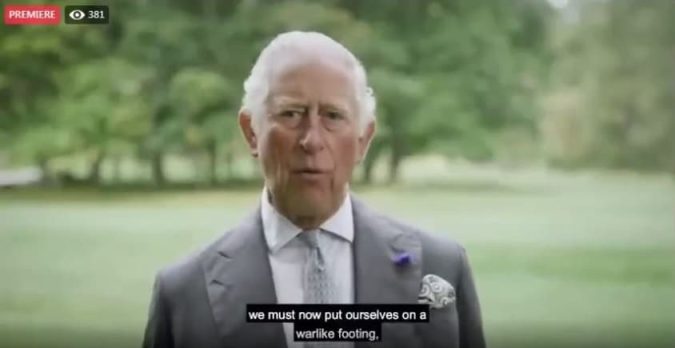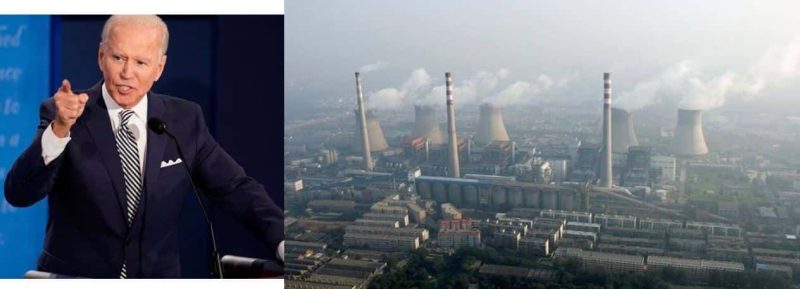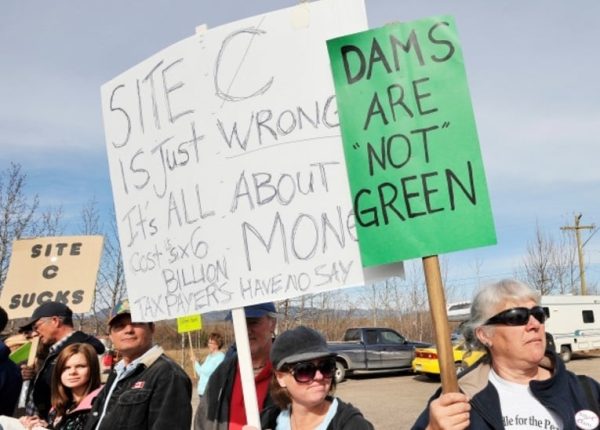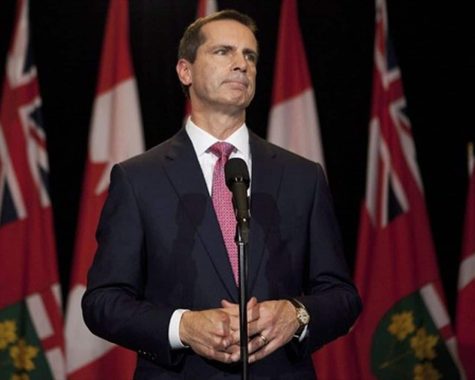Wildfires along the U.S. Pacific Coast, two simultaneous hurricanes in the Gulf of Mexico, melting glaciers and peat-bog fires in Canada, and an unusually hot summer in Europe together have raised global warming fears to frenzied proportions. Environmentalists are urging political leaders to legislate the rapid phase-out of fossil fuels. The most extreme call for action came from the future King of England, Prince Charles, who urged a “warlike footing” that would include creation of a centralized global authority to save the planet from catastrophic climate change. Just how such an unelected regime would exert power over the Earth’s 7.8 billion inhabitants wasn’t made clear.


The California and Oregon wildfires turned into an election issue, with Democratic Presidential candidate and former Vice President Joe Biden pointing to President Donald Trump’s pro-oil-industry policies as a cause. In fact, American greenhouse gas emissions have fallen by more than 14 percent since 2005, suggesting there’s very little connection between one country’s carbon dioxide emissions and global warming. Meanwhile, led by China and India, Asian emissions have doubled over the past decade and continue to grow. Overall, less than one-third of global emissions come from Western developed countries. China, India, Vietnam, South Africa, South Korea, the Philippines and Japan, all signatories to the Paris Climate Accord, are in various stages of constructing a mind-bending total of 1,800 coal-fired power plants.

And that brings us to Canada. If our country were to disappear from the face of the Earth, those new plants would replace our 1.6 percent of global emissions in just a few months. Despite that reality, the Trudeau government is actually accelerating its ideologically driven program to replace fossil fuels with so-called green energy – mainly wind and solar. The government’s Throne Speech in late September virtually ignored the economic destitution its anti-oil policies have wrought in Alberta. Even the potential global market access provided through the expansion of the Trans Mountain Pipeline that is now underway was couched in terms of providing a bridge to a fossil-fuel-free paradise.
The green energy fixation was also the focus of the Globe and Mail’s September 26 “Climate Issue”.
Columnist David Berman asserted that the costs of wind and solar power have “become attractive next to fossil fuels generating assets, particularly coal.” As evidence, he cited Tucson Electric Power’s phase-out of its coal-fired electricity generation. This is misleading.


Data from the U.S. Energy Information Administration shows that coal-fired plants are indeed being phased out – but their output is being replaced by natural gas. In fact, wind and solar provide less than 1 percent of Arizona’s electricity requirements. The technical revolution in natural gas production of the past dozen or so years (popularly summed up as “shale gas” and “fracking”) has kept gas prices down even as production has soared.
Germans have come to know and rue the hazards of pursuing a green power utopia all-too well. Despite hundreds of billions of euros invested, the basic unreliability of wind and solar necessitated Germany rehabilitating coal-fired power plants.
Fellow Globe and Mail columnist Eric Reguly stated that Canada’s share of renewables – i.e., hydro, wind, biomass, solar and ethanol – is above the average for OECD countries. But as is often the case with selective-fact statements from green power advocates, Reguly failed to mention that the large majority of that comes from hydro power. Hydro power is in fact one of the oldest ways to generate electricity and has nothing at all to do with the green energy “revolution”. Further, the dams and reservoirs associated with large-scale hydropower are hated by most environmentalists, who are doing all they can to prevent construction of new dams and even to have existing dams dismantled. Wind and solar, meanwhile, made up just 2.3 percent of Canada’s electricity supply in 2019.

Looking globally, the widely respected BP World Energy Outlook 2019 shows that, despite many hundreds of billions of dollars invested, wind and solar contributed the same 2 percent of world energy supplies last year while the contribution of fossil fuels had actually increased to 84 percent. Germans have come to know and rue the hazards of pursuing a green power utopia all-too well. A decade-long attempt to replace coal and nuclear with wind and solar sent electricity costs soaring to the second-highest in the European Union. Despite hundreds of billions of euros invested, the basic unreliability of wind and solar necessitated Germany rehabilitating coal-fired power plants. In an ironic twist, the coal is sourced from the U.S., made readily available by the aforementioned conversion of America’s power generation to natural gas.
China, the world’s largest emitter of greenhouse gases, produces most of the wind turbines that Western countries are spending billions on in pursuit of their save-the-world-through-green-power fantasy.
In Ontario, the previous Liberal government led by former Premier Dalton McGuinty implemented a similar green power plan to that of Germany, with equally disastrous results. Coal-fired power plants were shuttered and planned expansion of nuclear plants cancelled. The government signed 25-year locked-in windmill and solar contracts at several times existing electricity rates. Electricity prices more than doubled, taking Ontario from one of North America’s lowest-cost power jurisdictions to among the highest, more than twice as high as other provinces. As beleaguered homeowners struggled to pay their electricity bills, manufacturers decamped to low-cost U.S. states like Georgia and the Carolinas. Caterpillar, United Steel, Heinz, General Motors, Navistar, Kellogg’s, John Deere, Kraft Foods, Unilever and Bacardi’s closed some or all of their Ontario plants. Ontario’s deep economic wound was entirely self-inflicted.


Then there’s the impact on the land. The more than 8,000 wind turbines Ontario had built each required an average of 3 acres of space. Many are near bird habitats, causing locals to label them “bird blenders”. Wind power’s numerous other environmental shortcomings have lately been coming to light. The massive turbine blades only last so long and, it turns out, cannot be recycled. They will need to be placed in landfills. The foundations required to keep the windmills standing in the face of nature’s forces consume enormous volumes of concrete. The generators inside the pods use rare-earth metals mined in part by African child labour. And in another ironic twist, China, the world’s largest emitter of greenhouse gases, produces most of the wind turbines that Western countries are spending billions on in pursuit of their save-the-world-through-green-power fantasy.

Even all this is only part of the story. Because – surprise – the wind blows irregularly, because solar panels are useless during Ontario’s long dark winter nights, and because there is no way to efficiently store electricity, several new natural gas-fired power plants were needed to back up those unreliable wind and solar facilities. The inefficient deployment of capital and the need to pay those providers for standing by pushed Ontario’s power prices even higher. The only winners from this made-in-Ontario fiasco were the so-called “green-preneurs” who became very wealthy from those locked-in power contracts.

The moral of this sad story is that the Trudeau Liberals’ plans to replace fossil fuels with wind and solar are technically impossible and economically disastrous. Moreover, phasing out the oilsands would simply hand even more of the global crude oil market to such sterling global citizens as Russia and Iran, while throwing more than 1 million Canadians out of work and destroying the country’s largest source of wealth generation and export revenues. All at a time when that wealth generation is needed more than ever.
Trying to solve any problem with a solution that defies the laws of physics is bound to fail. What can Canada actually do to help reduce global emissions and help the economy? That will be the subject of my next column.
Gwyn Morgan is the retired founding CEO of EnCana Corp., formerly Canada’s largest producer of natural gas.





